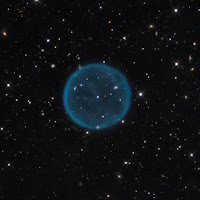| Name | Astronomical Designation | Location | Planet | Gemstone | Plant & Usage | Symbol |
|---|
| Algol | Caput Larvae | Beta Persei | 26 Taurus 10 | Saturn & Jupiter | diamond | Black Hellebore Hellebore juice with an equal amount of wormwood placed under
a diamond, etc., brings hatred and courage, preserves the members
of the
body, and grants vengeance over anyone you wish. |  |
|
|
|
|
|
| Pleiades | M45 (Taurus) | 29 Taurus 58 | Moon & Mars | rock crystal | Fennel Fennel seed with frankincense and quicksilver placed under a
crystal with the appropriate character [engraved on it], with the
Moon conjunct the Pleiades rising or at midheaven, preserves
the eyesight, summons demons and the spirits of the dead,
calls the winds, and reveals secrets and things that are lost. |  |
| Aldebaran | Aldaboram | Alpha Tauri | 9 Gemini 47 | Mars & Venus | ruby / garnet | Milk Thistle
Milky thistle seed put under a carbuncle with the character
shown [engraved on it], with the Moon conjunct [Aldebaran and]
the Ascendant or Midheaven, increases riches and brings great honors.
|  |
| Capella | Alhayhoch, Hircus | Alpha Aurigæ | 21 Gemini 51 | Jupiter & Saturn | sapphire | Thyme or Horehound Horehound seed mixed with equal parts of mint, wormwood and mandrake,
placed etc., exalts men to honors, and brings them the
favor of kings and nobles, and heals toothache, and is very medicinal. |  |
| Sirius | Canis major | Alpha Canis Majoris | 14 Cancer 05 | Venus | beryl | Juniper
One part savine juniper juice with wormwood and bistort and a
little serpent's tongue put under a golden beryl, etc., grants the
favor of the spirits of the air and the peoples of the earth, and
brings peace and concord between kings and other potentates, and
between husbands and wives.
|  |
| Procyon | Canis minor | Alpha Canis Minoris | 25 Cancer 47 | Mercury & Mars | agate | Water Buttercup or Heliotrope Heliotrope flowers with pennyroyal flowers placed etc. grants the
favor of God and man, gives men the favor of the spirits of the air,
gives great power over magic, and keeps men healthy. |  |
| Regulus | Cor leonis | Alpha Leonis | 29 Leo 50 | Jupiter & Mars | granite | Mugwort or Celandine Celandine juice with wormwood and mastic placed etc. takes away
anger and melancholy, makes men temperate, and grants favor.
|  |
| Dubhe | Cauda Ursæ | Alpha Ursæ Majoris | 28 Gemini 34 | Venus & Moon | magnet | Succory or Chicory Chicory juice with wormwood and periwinkle flower placed etc.
has power against enchantments and against dryness and gives
safety in travel, and if it be put together with wolf's teeth
it makes hunters proficient. |  |
| Algorab | Corvi | Delta Corvi | 13 Libra 27 | Saturn & Mars | onyx | Burdock
Burdock seed, leaves, and roots, with the tongue of a frog, placed
etc. makes men angry, hateful, daring, and evil-speaking, causes
wicked dreams, drives demons away, and protects men against demons
and evil winds. |  |
| Spica | Alpha Virginis | 23 Libra 50 | Venus & Mercury | emerald | Sage
Sage juice with trefoil, periwinkle, wormwood and mandrake placed
etc. will increase gold, accumulate riches, bring victory in lawsuits,
and free men from evil and anguish. |  |
| Arcturus | Alchameth | Alpha Boötis | 24 Libra 14 | Mars & Jupiter | jasper | Plantain
Plantain juice with seeds or rooted placed under jasper,
especially green [jasper], carries away fevers and restrains
the flow of blood. |  |
| Alphecca | Elpheia | Alpha Coronæ Borealis | 12 Scorpio 18 | Venus & Mars | topaz | Rosemary Juice of the herb called rosemary with equal parts trefoil and
ivy put etc., makes men chaste, and grants friendship and honor
with God and man.
|  |
| Antares | Cor scorpii | Alpha Scorpii | 9 Sagittarius46 | Venus & Jupiter | sardonyx | Birthwort
Birthwort juice with a little yew placed etc. gives men healthy
color, grants good memory and intelligence, makes them appear
wise, and banishes demons. |  |
| Vega | Vultur cadens | Alpha Lyræ | 15 Capricorn19 | Mercury & Venus | chrysolite | Winter Savory Savory juice with an equal amount of the herb called fumitory
and with a little of the stone called turonso, etc. grants
favor with beasts, protects from scabies, that is, against
demons, nocturnal phantoms, and fears. |  |
| Deneb Algedi | Cauda capricorni | Delta Capricorni | 23 Aquarius30 | Saturn & Mercury | chalcedony | Marjoram
Marjoram juice put under a chalcedony with its proper
character, the Moon conjunct the tail of Capricorn rising,
gives favor in lawsuits, improves the home in which it is kept,
keeps it [the home] secure, and increases all manner of riches.
|  |









































